#future of renewable energy
Text
The Future of Renewable Energy: Innovations and Trends
Introduction
The need for sustainable energy solutions has reached an unprecedented level of importance.. As global demand for energy continues to rise, the need for renewable energy sources becomes increasingly urgent. Renewable energy not only offers a cleaner alternative to fossil fuels but also promises to meet our energy needs sustainably. In this article, we at TechtoIO explore the future of renewable energy, focusing on the latest innovations and trends driving this vital sector forward. Read to continue link
#Innovation Insights#Tagsenergy storage solutions#future of renewable energy#green hydrogen#grid modernization#hydrogen energy#microgrids#renewable energy#renewable energy benefits#renewable energy challenges#renewable energy future#renewable energy innovations#renewable energy investment#renewable energy landscape#renewable energy policies#renewable energy technologies#renewable energy trends#solar technology#sustainable energy solutions#Best Fitness Gadgets to Boost Your Workout Routine#Technology#Science#business tech#Adobe cloud#Trends#Nvidia Drive#Analysis#Tech news#Science updates#Digital advancements
1 note
·
View note
Text
Future of Renewable Energy: Advancing Towards a Greener World
Explore revolutionary advancements in solar, wind, energy storage, grids, and emerging renewables shaping the Future of Renewable Energy. A cleaner, more efficient global energy landscape, paving the way for a sustainable future.
Renewable energy is a ray of hope in the pursuit of a more sustainable and reliable way of living. The desire to cut carbon emissions and address climate change has brought increased attention to renewable energy sources. Renewable energy evolves with technological breakthroughs, enabling broader use of clean, affordable, and sustainable electricity in the future. Let’s explore some of the amazing discoveries and advancements in Renewable Energy
Explore Full Blog Click Now
0 notes
Text
Innovative Technologies for Renewable Energy Storage
Renewable energy sources such as solar and wind power are becoming increasingly important in the transition to a low-carbon economy. However, one of the biggest challenges associated with renewable energy is the variability and intermittency of these sources. This is where energy storage comes in – it allows excess energy to be stored when it's generated and used later when it's needed.
In this article, we'll explore some of the most innovative technologies for renewable energy storage, the current challenges they face, and their potential for large-scale deployment.
Current Challenges in Renewable Energy Storage
Despite the importance of renewable energy storage, there are several challenges that must be overcome for these technologies to be widely adopted. The intermittency and variability of renewable energy sources mean that energy storage systems must be able to handle fluctuations in energy supply and demand. Additionally, the limited storage capacity of current technologies can make it difficult to store enough energy to meet demand during periods of high demand or low supply. Finally, cost and scalability challenges can make it difficult to deploy renewable energy storage systems on a large scale.
Emerging Technologies for Renewable Energy Storage
1. Batteries
Batteries are one of the most widely used technologies for renewable energy storage. Lithium-ion batteries, for example, are commonly used in electric vehicles and smartphones. While battery technology has come a long way in recent years, there are still significant challenges that must be addressed, such as limited energy density, high cost, and the need for frequent replacement.
Recent advancements in battery technology are focused on improving energy density and reducing costs. For example, research is being done on developing new types of batteries such as solid-state batteries and flow batteries that could have higher energy density and longer lifespan than current batteries.
2. Hydrogen Fuel Cells
Hydrogen fuel cells are another promising technology for renewable energy storage. Hydrogen can be produced from excess renewable energy using electrolysis and stored for later use in fuel cells. Hydrogen fuel cells have the potential to provide large-scale, long-duration energy storage and can be used for transportation as well as electricity generation.
However, hydrogen fuel cells are still relatively expensive and face several technical challenges, such as low energy efficiency and the need for large storage tanks to store the hydrogen.
3. Pumped Hydro Storage
Pumped hydro storage is a well-established technology for renewable energy storage that uses two reservoirs at different elevations to store energy. During periods of excess renewable energy, water is pumped from the lower reservoir to the upper reservoir. When energy is needed, the water is released from the upper reservoir, generating electricity as it flows back down to the lower reservoir.
While pumped hydro storage is a reliable and efficient technology, it has limited scalability due to the need for suitable topography and water resources.
4. Thermal Energy Storage
Thermal energy storage systems store excess renewable energy in the form of heat, which can be used later to generate electricity. For example, concentrated solar power generation plants use thermal energy storage to store excess energy from the sun during the day and use it to generate electricity at night.
Thermal energy storage systems have the potential to provide large-scale, long-duration energy storage, but face challenges such as low energy density and limited scalability.
Comparative Analysis of Innovative Technologies
While each of these innovative technologies has its advantages and disadvantages, it's clear that energy storage will be a critical component of a renewable energy system. A comparison of key performance metrics such as efficiency, capacity, cost, and scalability reveals that no single technology is the clear winner. However, a combination of these technologies may be the most effective approach for large-scale, long-duration renewable energy storage.
Conclusion
In conclusion, renewable energy storage is a critical component in the transition to a low-carbon economy, as it allows excess energy to be stored and used when it's needed. While there are several challenges associated with renewable energy storage, there are also many innovative technologies that show promise. These include batteries, hydrogen fuel cells, pumped hydro storage, and thermal energy storage. Each of these technologies has its advantages and disadvantages, and a combination of them may be necessary for large-scale, long-duration renewable energy storage. As we continue to develop and deploy these technologies, we move closer to a sustainable energy future that benefits both the environment and society as a whole.
0 notes
Text
#green hydrogen systems#green hydrogen companies#hydrogen renewable energy#future of renewable energy#future renewable energy technology#green future energy#sustainable energy sources#sustainable energy and fuels
1 note
·
View note
Text
No-paywall version.
"You can never really see the future, only imagine it, then try to make sense of the new world when it arrives.
Just a few years ago, climate projections for this century looked quite apocalyptic, with most scientists warning that continuing “business as usual” would bring the world four or even five degrees Celsius of warming — a change disruptive enough to call forth not only predictions of food crises and heat stress, state conflict and economic strife, but, from some corners, warnings of civilizational collapse and even a sort of human endgame. (Perhaps you’ve had nightmares about each of these and seen premonitions of them in your newsfeed.)
Now, with the world already 1.2 degrees hotter, scientists believe that warming this century will most likely fall between two or three degrees. (A United Nations report released this week ahead of the COP27 climate conference in Sharm el Sheikh, Egypt, confirmed that range.) A little lower is possible, with much more concerted action; a little higher, too, with slower action and bad climate luck. Those numbers may sound abstract, but what they suggest is this: Thanks to astonishing declines in the price of renewables, a truly global political mobilization, a clearer picture of the energy future and serious policy focus from world leaders,
we have cut expected warming almost in half in just five years.
...Conventional wisdom has dictated that meeting the most ambitious goals of the Paris agreement by limiting warming to 1.5 degrees could allow for some continuing normal, but failing to take rapid action on emissions, and allowing warming above three or even four degrees, spelled doom.
Neither of those futures looks all that likely now, with the most terrifying predictions made improbable by decarbonization and the most hopeful ones practically foreclosed by tragic delay. The window of possible climate futures is narrowing, and as a result, we are getting a clearer sense of what’s to come: a new world, full of disruption but also billions of people, well past climate normal and yet mercifully short of true climate apocalypse.
Over the last several months, I’ve had dozens of conversations — with climate scientists and economists and policymakers, advocates and activists and novelists and philosophers — about that new world and the ways we might conceptualize it. Perhaps the most capacious and galvanizing account is one I heard from Kate Marvel of NASA, a lead chapter author on the fifth National Climate Assessment: “The world will be what we make it.” Personally, I find myself returning to three sets of guideposts, which help map the landscape of possibility.
First, worst-case temperature scenarios that recently seemed plausible now look much less so, which is inarguably good news and, in a time of climate panic and despair, a truly underappreciated sign of genuine and world-shaping progress...
[I cut number two for being focused on negatives. This is a reasons for hope blog.]
Third, humanity retains an enormous amount of control — over just how hot it will get and how much we will do to protect one another through those assaults and disruptions. Acknowledging that truly apocalyptic warming now looks considerably less likely than it did just a few years ago pulls the future out of the realm of myth and returns it to the plane of history: contested, combative, combining suffering and flourishing — though not in equal measure for every group...
“We live in a terrible world, and we live in a wonderful world,” Marvel says. “It’s a terrible world that’s more than a degree Celsius warmer. But also a wonderful world in which we have so many ways to generate electricity that are cheaper and more cost-effective and easier to deploy than I would’ve ever imagined. People are writing credible papers in scientific journals making the case that switching rapidly to renewable energy isn’t a net cost; it will be a net financial benefit,” she says with a head-shake of near-disbelief. “If you had told me five years ago that that would be the case, I would’ve thought, wow, that’s a miracle.”"
-via The New York Times Magazine, October 26, 2022
#climate change#global warming#renewable energy#climate anxiety#climate crisis#humanity#green energy#green future#apocalypse#natural disasters#good news#hope#research#hope posting
2K notes
·
View notes
Text
The amount of wind and solar power under construction in China is now nearly twice as much as the rest of the world combined, a report has found.
Research published on Thursday by Global Energy Monitor (GEM), an NGO, found that China has 180 gigawatts (GW) of utility-scale solar power under construction and 15GW of wind power. That brings the total of wind and solar power under construction to 339GW, well ahead of the 40GW under construction in the US.
The researchers only looked at solar farms with a capacity of 20MW or more, which feed directly into the grid. That means that the total volume of solar power in China could be much higher, as small scale solar farms account for about 40% of China’s solar capacity.
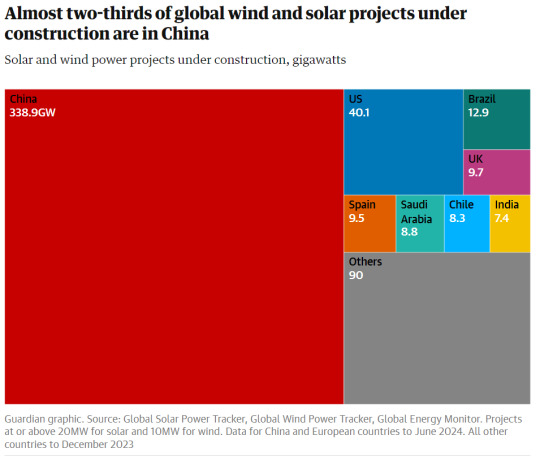
11 July 2024
101 notes
·
View notes
Text
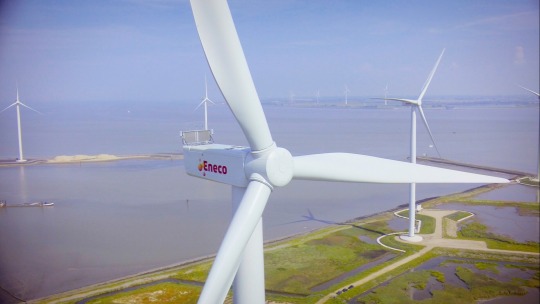


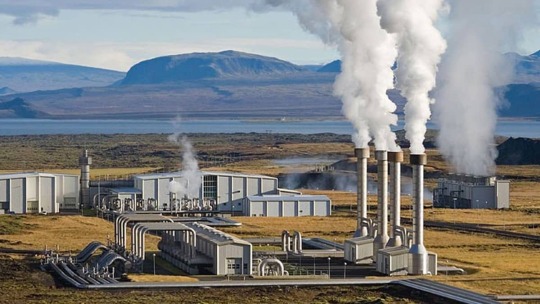
you;re all so sexy
#yeah I’m bisexual#attracted to guys girls genderqueers and renewable energy sources#solarpunk#objectum#climate positivity#IM SO EXCITED FOR A FUTURE FULL OF RENEWABLE ENERGY!!!! I KNOW IT IS POSSIBLE!!!!!!!#in order left to right top to bottom: wind turbines solar panels hydroelectric dam and geothermal power plant#I LOVE GEOTHERMAL PLANTS#from new zealand aotearoa so I see a lot of them#THEY MAKE CLOUDS ^_^
374 notes
·
View notes
Photo
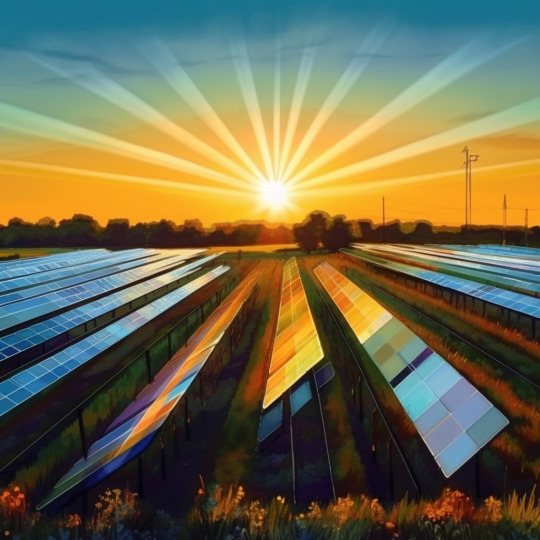


Envision Our Energizing-Vibrant Renewable Future Now
#earth day#earth month#renewable energy#renewable power#ai art#ai#image generation#design#climate art#renewable electricity#power sources#vibrant skies#solar power#solar#wind#wind energy#green future#solarpunk#renewables#midjourney#imagination#image building
252 notes
·
View notes
Text
From Lexi Drumonde's video on Hopepunk.

#hopepunk#hope punk#solar punk#solarpunk#futurism#misinformation#clean energy#renewable energy#nihilsm#nihilizm#climate and environment#climate hope#climate action#climate doom#doomerism
155 notes
·
View notes
Text
Don't forget the reason the U.S. is supporting Israel's genocide of Palestine - hell, 90% of the reason they ever get involved into something in the Middle East is for ulterior purposes regarding oil.


That and the Ben Gurion Canal project, which you can learn more about:
Also this short video explaining the canal's significance and full history in summary:
Simply put,

#free palestine#israel is a genocidal state#israel is a terrorist state#fuck america#fuck israel#comic pic is from persepolis btw#which is an autobiography of the author growing up in iran during the iranian revolution#not to mention how the US destabilized iran bc their democratically elected leader was gonna nationalize its oil for iran#and they put someone who would play ball for them in charge#its always about the oil#EVEN IN THE MIDST OF EVERYONE GOING “THE FUTURE ISNT VIABLE W FOSSIL FUELS”#WE SHOULD BE LOOKING FORWARD FOR USING AND TRANSITIONING TO RENEWABLE ENERGY SOURCES#BUT THE CAPITALISTIC FUCKS WANT MONEY NOW#AT THE EXPENSE OF HUMAN LIVES#THE LIVES OF ARABS AND BROWN PPL INDIGENOUS TO PALESTINE NOTE THAT#aaaaaaand of course the canal#much easier than dealing w egypt#for both israel and america#israel will be onboard w them and they'll have a way of strengthening their grip on the middle east and world economy#this is honestly disgusting and terrifying#egypt#suez canal
65 notes
·
View notes
Text
In today’s episode, Ariel chats with Heather MacKenzie, Executive Director of Solar Alberta, about transitioning to renewable energy deep in the heart of oil and gas country - in a just and sustainable way. Join us to learn about the history of the Solar Alberta organization, from its grassroots beginnings in neighbourhood solar projects, to dealing with (government-funded!) trolls online, all the way up to being the leading non-profit solar organization in Alberta and providing worker upskilling in a unique market.
You can go to https://solaralberta.ca to learn more, or connect with and follow them on Instagram, Facebook, Twitter, and LinkedIn.
Connect with Solarpunk Magazine at solarpunkmagazine.com and on Twitter @solarpunklitmag
Connect with Solarpunk Presents Podcast on Twitter @SolarpunkP, Mastodon @[email protected], or at our blog https://solarpunkpresents.com/
Connect with Ariel at her blog, on Twitter at @arielletje, and on Mastodon @[email protected]
Connect with Christina at her blog, on Twitter @xtinadlr, and on Mastodon @[email protected]
#solarpunk#solarpunk presents#solarpunk futures#podcast#Solar Alberta#Heather MacKenzie#energy transition#renewable energy#just transition#sustainable solutions#sustainability#Ariel#upskilling#YEG#Edmonton#Alberta#grassroots#fossil fuels#Alberta oil and gas#season one episode eight
20 notes
·
View notes
Text
#tech#TechnologyAI for sustainability#circular economy#electric vehicles#geothermal energy#green buildings#hydropower#Innovative technologies#Internet of Things#precision farming#renewable energy sources#smart grids#solar power#sustainable future#sustainable materials#sustainable transportation#vertical farming#wind energy
2 notes
·
View notes
Text

Step into The Rike and find your muse in our selection of herbal teas, seeds, and handcrafted products. Infused with innovation and tradition, each item is a testament to sustainable agriculture and creativity. Discover how inspiration can strike with every sip of tea and turn of craftsmanship. Join The Rike in cultivating a more inspired and green future.
#Eco-Futurism#Green Technology#Sustainable Living#Renewable Energy#Environmentalism#Bioarchitecture#Permaculture#Ecotopia#Biomimicry#Urban Gardening
2 notes
·
View notes
Text

2 notes
·
View notes
Text
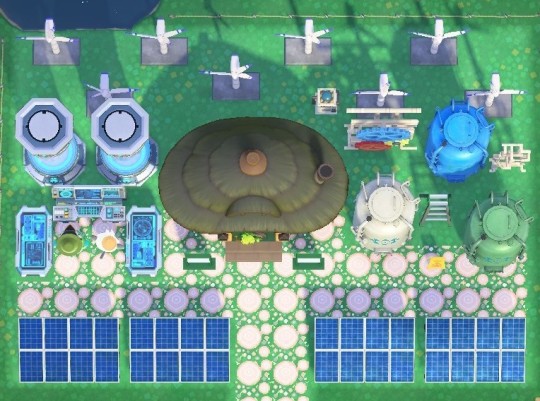
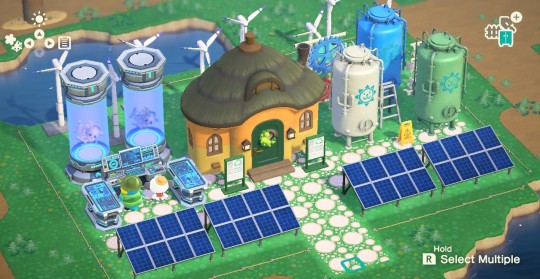
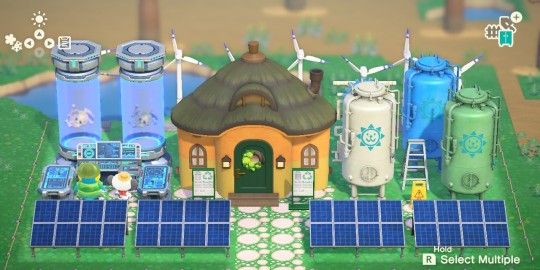
☠️ Eco-friendly Factory for Cube ☠️
Creating renewable sources of energy from solar, wind, and the bones of our enemies.
#ac cube#acnh cube#acnh hhp#animal crossing#animal crossing new horizons#acnh exterior#renewable energy#the future is now
7 notes
·
View notes
Text
A Look Inside Elon Musk's Rygar Enterprises
Learn about Elon Musk's Rygar Enterprises, its history, projects, and plans for the future of technology. Discover about rygar enterprises.
Introduction:
Who hasn’t heard of Elon Musk? His name is practically inseparable from concepts such as innovation, ambition, and an unyielding pursuit of progress. This titan of the industry has a long and storied career, from his founding of PayPal to his more recent ventures like Tesla, SpaceX, and The Boring Company. But now, he’s made yet another move that’s sure to shake things up: the…

View On WordPress
#A Look Inside Elon Musk&039;s Rygar Enterprises#AI research#artificial intelligence#brain-computer interface#creativity#disruption#electric cars#Elon Musk#engineering#entrepreneurship#future of transportation#Hyperloop#innovation#leadership#Mars colonization#Mars mission#Neuralink#OpenAI#renewable energy#Rygar Enterprises#SolarCity#space exploration#SpaceX#SpaceX Starship#sustainable living#technology#Tesla#The Boring Company#tunnel construction#vision
7 notes
·
View notes